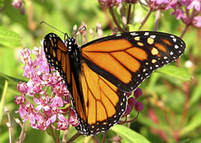 You may have read in my last blog post that becoming a citizen scientist is one important way that you can help the Monarchs. There are many projects dedicated to monitoring Milkweed populations and they are in of need citizen scientists such as yourself! One way to becoming a citizen scientist is to participate in a Milkweed monitoring survey. This requires you to be able to identify the Milkweed in your area. Luckily, Milkweed is very easily identifiable by its flowers and fruits. With just a few simple hints, you will be able to find and confidently identify Milkweed. Even if you aren't positive on the species, many surveys are just looking for general Milkweed plant populations. The Patterns Method I highly recommend the "patterns method" of identifying plants that Thomas Elpel covers in his book Botany In a Day. It is a quick and fun way to learn how to identify hundreds of plants in a short amount of time. Botanists and taxonomists have created a filing system based on these patterns. Once you can identify these key similarities in a plant family, you are able to identify the species of the plant much faster. Image from Thomas J. Elpel's Botany in a Day For instance, plants in the milkweed family, Asclepiadaceae, (don't let the name intimidate you), secrete a milky sap (except for Butterfly Milkweed) and opposite or sometimes whorled leaves. There are 5 separate sepals (petal-like leaves) and 5 fused petals. The corona (circle of petals around the center of the flower) contains 5 hooded forms facing inwards. Inside the corona there are 5 stamens (male parts) fused to the ovary (female part). The pods are filled with many seeds with silky tufts. Flowers
Fruits
Milky Sap
Butterfly Milkweed- Asclepias tuberosa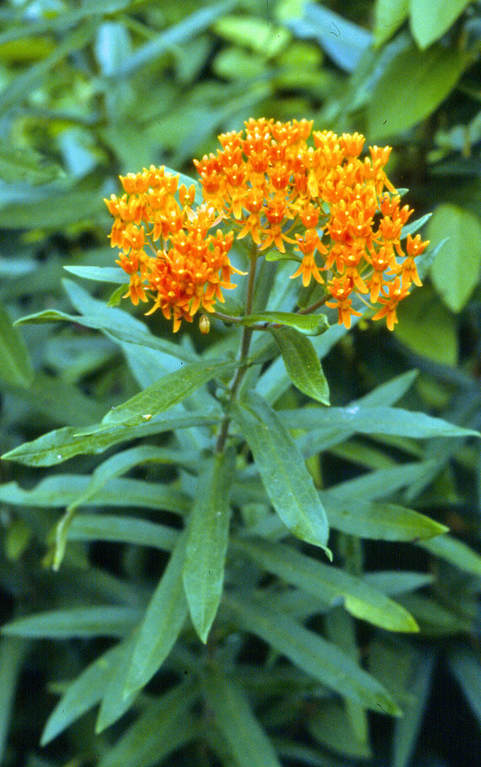 Stem: 20 to 60 cm tall. Flowers: bright orange-yellow, arranged in umbels. Leaves: alternate on the stem (not opposite each other), lance-shaped, 5 to 10 cm long, smooth on top and downy beneath. Habitat: limestone soils, open, rocky, dry sites. Does not tolerate shade. Unique feature: no milky sap. Butterfly milkweed (Asclepias tuberosa). Photo by Larry Stritch. Swamp Milkweed- Asclepias incarnata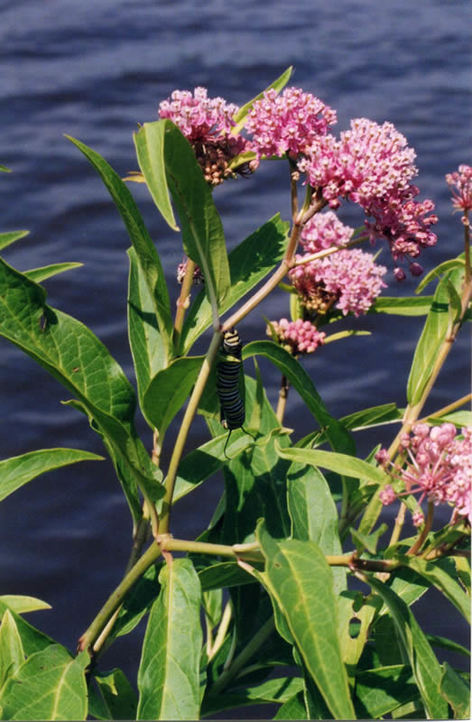 Stem: Downy (hairy), from 60 to 200 cm tall. Umbels: Red or purplish-pink. Leaves: Narrow, tapered, 4 to 17 cm long, arranged in opposite pairs. Fruits: Long, narrow and smooth follicles, changing colour from green to brownish. Habitat: Wetlands. Also found in swamps, ditches and near streams, rivers and lakes. Population: Often scattered – does not form dense colonies. Swamp milkweed Photo courtesy of Jennifer Anderson, USDA-NRCS PLANTS Database. Common Milkweed- Asclepias syriaca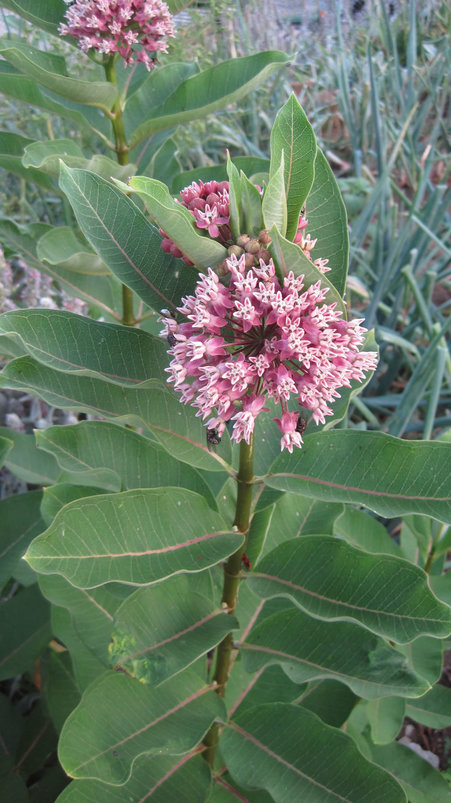 Stem: downy, usually single, 90 to 120 cm tall. Underground stems. Leaves: broad and thick, 10 to 20 cm long, arranged in opposite pairs on the stem and with pubescent undersides. Flowers: pale pink or violet, arranged in almost spherical umbels. Fruits: large spindle-shaped fruit, bumpy, rough and downy. Habitat: poor, dry soil, disturbed, sunny sites. Whole plant with flowers. Photo by David Taylor. Showy Milkweed- Asclepias speciosa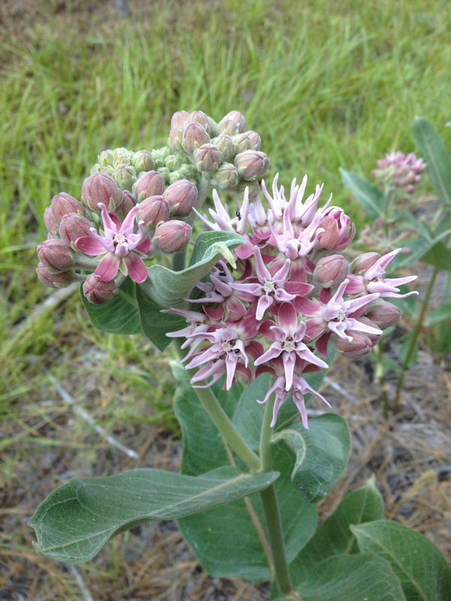 Stem: 45 to 200 cm tall, velvety or pubescent (hairy). Flowers: Pale pink, arranged in umbels. The corona hoods are long (9 to 13 mm) and lance-shaped, making the flowers look like stars. Leaves: Opposite, 10 to 25 cm long, smooth or slightly downy. Habitat: Well-drained soil, sunny sites, pastures, forest edges,untilled fields, roadsides, ditches. Showy milkweed (A. speciosa). Photo: Sarina Jepsen/Xerces Society Resources
Elpel,Thomas-Botany in a Day http://www.wildflowers-and weeds.com/Plant_Identification/Patterns_in_Plants.htm Mission Monarch- Milkweed sheet Monarch Mission. http://www.mission-monarch.org/wpcontent/uploads/2017/07/FICHES_ASCLE%CC%81PIADE_ANG_FINAL.pdf Thomas G. Barnes, hosted by the USDA-NRCS PLANTS Database / Barnes, T.G., and S.W. Francis. 2004. Wildflowers and ferns of Kentucky. University Press of Kentucky. USDA Forest Service. Plant of the Week. https://www.fs.fed.us/wildflowers/plant-of-the-week/asclepias_syriaca.shtml
134 Comments
Roy
8/3/2018 06:51:20 pm
Thank you so much for posting this. It’s been so hard to find a good source with clear picture of all the different types of milkweed.
Reply
Rebecca Chandler
4/16/2019 12:08:54 pm
I'm so glad it was helpful!!
Reply
Carolyn
9/11/2020 03:00:08 pm
What is the best milkweed to plant for monarchs
Edith Fugate
1/31/2021 08:43:20 pm
where can i get these ?
Laura Riester
8/19/2018 08:49:35 am
Aaaahhhhhh - finally some excellent photographs to describe the milkweeds! Thank You.
Reply
Rebecca Chandler
4/16/2019 12:09:24 pm
Thank you for reading! :)
Reply
CharlieLange
9/20/2018 11:13:48 am
So, I planted milkweed from seed ( roadside pods) that do secrete the milky substance when injured. Will this variety attract and feed Monarch larva ?
Reply
Elizabeth
1/22/2019 05:39:43 pm
Yes, they will attract monarchs.
Reply
Jo Nichols
11/5/2018 06:42:39 pm
Is it “ok” for me to grow milkweed from Minnesota seeds, where I live in California (Sunnyvale)? When I was north of Minneapolis just this past August, my friend gave me a bunch of her milkweed seeds. The pods were large and the leaves roundish. I’ve never seen milkweed like those around here. I have slender-leafed, yellow-orange/red flowers; I don’t know species—I bought the plant locally; it may be non-native; it grows back when I cut it back.
Reply
Rebecca Chandler
4/16/2019 12:15:07 pm
Hi Jo,
Reply
Nick
11/30/2018 11:23:56 pm
Thank you so much for this. I was looking to help two fellers with there shine and they asked me to look in the surrounding area so now I can get them but I got distracted by a 3 star deer and I’m sure I can get a perfect pelt from it.
Reply
Arthur Hamilton
4/15/2019 08:42:05 pm
Love sharpness of the photos- Thanks
Reply
Rebecca Chandler
4/16/2019 12:15:40 pm
Thank you for reading!
Reply
Melissa
5/6/2019 06:54:57 am
I found a monarch butterfly in my backyard. It has an injured wing. I tried to create a habitat for it. Can it eat sugar water on a cotton ball? If not what do I feed it? Any help would be appreciated. Thank you.
Reply
5/7/2019 05:45:34 pm
it eats pollen from flowers and sugar water will help there are videos on fixing wings thank you
Reply
Amy Khantzis
5/1/2024 06:25:40 pm
Same,injured bent wing, how to feed? How can I help this beautiful creature? Live in Indio,California.bought the red and yellow milkweed.Is that ok? It can’t fly
Alexandra
5/6/2019 03:22:22 pm
Great job, but how about expanding on this to include all the native milkweed species?
Reply
Rebecca Chandler
4/4/2020 09:17:23 am
Great idea! I will work on that :)
Reply
Loren Carle
5/30/2020 08:47:01 pm
Agreed! I was hoping both to find the Mexican Whorled, and other species appropriate to Utah (Salt Lake City - desert valley floor—very alkaline, clay-rich soil—ancient lake-bottom). I am also looking for ways of recognising the young plants, so I don’t weed them with the dandelions. Trying to move the neglected lawn gently towards healthy native meadow, a few dandelions and foxtails at a time.
Barbara Walker
6/5/2019 05:21:00 am
I found what looks like milkweed in a field. The leaves secrete milk but the stems are reddish; the ones in my garden have green stems so I'm wondering if this is actually milkweed or a pretender? The field plants have early white flowers, whereas my 2-year old garden plants have never flowered. Thank you.
Reply
6/19/2019 09:35:06 am
I have the same situation. The flowers are not what I would call in an umbel shape and they are very small (about 1/8 inch across).
Reply
Russell Reeves
6/25/2019 01:12:32 pm
Dogbane maybe. Do a search on Google and compare the images to what you have. Dogbane is poisonous so I ripped mine out.
Reply
J. ODell
6/15/2024 05:54:06 am
Probably Dog Bane, don’t know without visual, Google is your friend.
Reply
Great post... I haven't done the rip the leaf test yet but just looking at the photos here, pretty sure that's what I have.
Reply
Rebecca
6/26/2019 12:13:07 pm
So, the milkweeds with the milky sap ARE the ones that the Monarchs eat. The only milkweed plant that doesn't exude the latex is Butterfly Milkweed and the Monarchs will still feed on this type. Although Monarchs have preferences of some varieties over others, Monarchs will feed on most species of milkweed. The ones they especially seem to like are the four mentioned on this page along with Tropical Milkweed and Red Milkweed. Be careful when doing the leaf tear test because the latex can be an irritant to skin and especially eyes. Thanks for your question!
Reply
Hey thanks for the reply. I've been doing some more homework on this, perhaps something that should be added here?
Roni Smith
6/26/2019 06:06:41 am
Which of milkweed types does the Monarch like?
Reply
Rebecca
4/4/2020 09:19:38 am
Hi Roni,
Reply
Eric Claeyborn
12/12/2021 01:44:56 am
There are a couple of bad milkweed plants that you'll want to get rid of. The Pale Swallow-wort and the Black Swallow-wort Milkweed. Just Google some pictures of them. They'll kill Monarchs.
Reply
7/13/2019 09:28:25 pm
last year i had a few butterfly plants that produces the seeds for wind distribution. they came back this year but so did so other milkweed plans that grew to almost 6ft tall. just before they could flower the home owners assoc. contacted me and demanded i cut down the weeds since i'm 83 ,on limited income i could not have them come and cut down the plants so i had to do it. idonot know if they would have attracted monarchs but i wanted the chance the parent plants are just 2 1/2 feet tall. is there a smaller plant i can get to do the job.
Reply
Patti Farris
7/26/2019 11:29:49 am
Hi John,
Reply
Ann Knudson
7/19/2021 01:23:00 pm
Suggest you, and any friends you can recruit, run for office in your homeowners association. Take it over and you can grow milkweed in peace.
Reply
Patti Farris
7/26/2019 11:26:33 am
Is there a simple way to tell a. speciosa from a. syriaca? In the wild they look very similar but in the picture here syriaca seems to have a reddish hint to its leaf veins.
Reply
Greta
10/13/2019 09:03:44 pm
For me, the flowers are distinctively different. A. speciosa has longer hoods on top that point outwards, giving it a starry look. The hoods on A. syriaca are shorter and stick straight up.
Reply
April Fairweather
8/16/2019 07:01:27 am
This is my second year and, so far, I'm flunking Milkweed 101. Last year I planted six asclepias incarnata which came along nicely both years but no, I mean NO, butterfly action. I now wonder if they really are swamp milkweed or some imposter. Four to six thick, heavy,dark greenish-brown stalks arise from a single stump. The leaves are healthy and look exactly like the incarnata in on-line photos. It's mid-August and I have only tiny, green buds, no flowers. Late bloomers or fakes? No eggs or caterpillars to be found, not a single chewed leaf, and no frassy poo. I have a patch of other incarnata (I think) where each plant arises from a single, independent, flimsy stem. These attract monarchs and I've had some caterpillars - none survived. In an effort to protect them from flying, stinging, poisonous, infectious insects, I erected a small lattice shelter then covered it with fine net. (Somehow I'd managed to trap a monarch, then my cat got inside and laid on the fragile plants.) Yesterday when I discovered two tiny caterpillars on the plants outside the net tent, I carefully removed the plants (complete with attached caterpillars) then transplanted to the safety of the tent. I guess after all this, my questions are: Shall I pull out the stumps of those incarnata-like plants that are not attracting monarchs? And what has happened to those that died? And am I beating myself up with the tent idea? I will happily submit photos of all of the above. Heading out now for a cat-count probably ending in renewed discouragement. Thank you for any advice. April Fairweather, Central PA
Reply
Jenny
8/16/2019 11:37:50 am
April, first I'm no expert but just curious, did you obtain or buy seeds? Only a guess here but it seems finding locally growing weed might be a better idea. And if your in a big city it might mean a road trip, stuff grows anywhere weeds can grow and not be mowed down.
Reply
JJM
8/24/2019 07:37:46 am
Thank you for posting, thank you for the helpful comments and thank you planting! I have a hard time weeding out the “weedy-weeds” from the desired plants and this helps me.
Reply
Alice Ray
9/8/2019 08:49:54 am
I have the orange flowering milkweed which I started by digging up from a road side ditch that was about to be mowed down. It has been blooming in my garden for years but it blooms and makes pods with seeds attached to silky fluff that I try every fall to let loose along my long lane. Nothing shows...should I save the seeds and plant it in the spring? The monarchs do not appear here (upper SC) until the milkweed seed has blown away. They usually appear in late September and October. I do try to grow butterfly bushes (four) to feed them but I would like to have more flowers blooming for them as they travel. Years ago when my daughters were young, we lay down in our yard and were amazed to watch a trail of hundreds of monarchs passing over our farm. We have not seen that many since and their numbers are decreasing each year. We get lots of fritillary and swallowtail and other smaller butterflies but treasure the sight of monarchs.Thank you for your website which has helped me.
Reply
Jenny
9/8/2019 11:56:52 am
Pretty sure it's the common variety they prefer to eat as caterpillars. (Second from the bottom picture on this page.) The one with the rosy pink flowers on it. I have the orange one too and though I see butterflies drinking nectar I have never seen any kind of caterpillar on it. Same goes for the butterfly bush.
Reply
Victor
6/13/2020 01:57:25 pm
I have many of the orange flowering Milkweed plants. I grew them from seed and this year I have well over 50 seed pods. Last Year I had a few and a couple have sprouted after I planted the seeds. Last year I had two cats on them and they were devouring the plants.
Rikiev
9/11/2019 04:06:05 pm
One odd thing I just discovered. There are some small furry caterpillars in my milkweed. They have the color of a monarch butterfly. Now, the interesting part is, I just saw a monarch caterpillar on my semi-dried dill plant. Is this a normal behavior ?
Reply
Rebecca
4/4/2020 09:24:08 am
Hi Rikiev,
Reply
Alanna Hofer
9/11/2019 06:21:45 pm
I found a monarch caterpillar in my backyard, and I was missing so I took it in. I have never raised a monarch, but I have raised caterpillars before. The problem is I don't know if my weed ridden yard has any milkweed in it. I looked in the area, but I couldn't find any plants that matches the description or the picture, although I did just mow the lawn. How do I find milkweed in the absence of seed pods AND flowers when just mowed. And what do I do if there is no milkweed. What would a monarch caterpillar be out here without milkweed, anyway. I don't know if milkweed even grows here in the Midwest.
Reply
Jenny
9/11/2019 08:57:35 pm
If you found a monarch caterpillar, you must have milkweed close. Doubt you mowed it since it grows so tall. Almost as tall as a corn stalk. Look at those last two photos here, that's what I have. Raised a half dozen or so indoors just clipping leaves and feeding them. But that's the ONLY thing they eat. Gotta be some around. Once I knew what I was looking for and started looking around, the stuff is growing along side most country roads here, In the ditch between where they mow the side of the road and farms and such. Plenty of it. I'm in MI by the way if that helps.
Reply
Cindy
7/23/2020 10:26:15 am
Hi Jenny, I'm in way north end of Oakland County MI, heavily wooded and open meadows. This spring I repurposed my kitchen garden to a 'b& b' flower patch with whatever tasty nursery plants I could get around here, and tada! we have monarchs already! Am planning now how to do purposeful improvements for next year. Any thoughts? Thinking of simply expanding one end, say 12'× 6' for a dozen - fifteen or so locally sourced common Michigan milkweed, whatever I can scout or beg from local properties before frost. We use no chemicals but after 30 years here suburbia is encroaching, less frogs and swallows is our bellwether. Thanks.
Darla L Vos
10/10/2019 09:40:09 am
Thanks so much for this. It is just what I've been looking for.
Reply
Rebecca
4/4/2020 09:24:45 am
Thank you for reading, I'm glad it was helpful. :)
Reply
Maria S Catalino
11/11/2019 02:54:26 pm
When I learned that the Mexican Milkweed, which grows very tall, carries a parasite injurious to the chrysalis I quickly pulled up all of mine. Hope all Monarch lovers are aware of this.
Reply
Greta
11/11/2019 06:59:10 pm
Wow, thanks for the heads-up! I looked that up, and found that the parasite is only a problem in places where the mexican milkweed doesn't die back to the ground in the winter. It's Question #4 on this page: https://monarchjointventure.org/news-events/news/qa-about-research-related-to-tropical-milkweed-and-monarch-parasites
Reply
Rebecca
4/4/2020 09:29:12 am
Hi Elaine,
Reply
Tom Griffiths
1/24/2020 10:12:31 pm
I read in our local newspaper about the recent decline of the monarch, I do see them occasionally here in our garden in Concord, CA; I will talk to our local nursery to see if they can recommend something that I can put in our garden (we have plenty of garden space here) that will help them...Thank you..
Reply
Rebecca
4/4/2020 09:31:43 am
Hi Tom,
Reply
Faye
2/23/2020 04:34:55 am
I am in Australia just recently I have found about 30 catapiller on my milkweed plant. In which they demolished it in no time flat. What else can I feed them. They are monarch
Reply
Rebecca
4/4/2020 09:33:50 am
Hi Faye,
Reply
Kathy Addison
4/25/2020 08:10:08 am
Does any type of milkweed have stickers on the leaves
Reply
PATRICIA LAMMERSFELD
5/19/2020 04:37:26 pm
I used to find milkweed along the railroad tracks in suburban Chicago. Now I live in South FL. Where can I find milkweed plants for my yard?
Reply
Mike Martin
5/29/2020 07:56:49 pm
Clarification:
Reply
Chelse
6/1/2020 10:48:13 am
When should I be looking for monarch eggs under the leaves in East Tennessee?
Reply
Scott Stephens
6/8/2020 06:34:43 pm
Very nice! Thank you for photo's and explanations. Great info!
Reply
Carol Walker
6/19/2020 03:07:42 pm
How do I submit a pic of my “milkweed”?
Reply
Carol
7/5/2020 08:39:24 pm
I'm writing from NZ but while living in Missouri I drew what I think is a milkweed? It was 3' tall/fluffy thistledown type seeds bursting from the gorgeous 'cradle' split. BUT had thin ribbonlike leaves drooping and curling around the strong upright stalk. SO different from the photo 'A speciosa' in the saveourmonarchs.org site. My drawing is detailed and framed in pride of place as a memory of my years in USA flora drawings. It needs a name? Thanks. Carol
Reply
Greta
7/6/2020 08:33:36 am
Can you post a link to a photo of your drawing? I don't see it if you already did.
Reply
Paulette Hunter
7/28/2020 06:04:27 pm
Hi there, I live in Washago Ontario Canada. My coworker gave me 4 pods of milkweed native to my area she harvested from plants in her yard nearby. I planted them last fall with a bit of fresh earth next to the river in front of my home. Well I have at least 20 plants growing some with a cluster of flowers some with none. I realize this is only their first year so may not get any activity. I'm really not sure yet which milk weeds I have but I am trying to research that by identifying them on the net. Funny though I have other plants nearby that have been there (since my husband stopped mowing them down)that may also are br another species of Milkweed. We have a lot of geese here so we decided to let it all grow to deter them from coming up a pooping everywhere. I was just wondering if I could send you some pictures of what I have growing so you could confirm what and if it's milkweed
Reply
Jenny
7/28/2020 06:47:44 pm
Try pasting "which milkweed plants do monarchs breed on" into google, turn on images, and start looking. TONS of images there. Surely you can match what you have to images already online.
Reply
Dan Findrick
10/1/2020 11:09:00 am
I just noticed a bunch of small orangish pod looking things on the stem of my milkweed. They are about the size of a freckle. Any idea what they might be? Probably about 25-50 of them.
Reply
Jenny
10/1/2020 02:39:26 pm
Monarch eggs are yellow and never all laid in the same spot. Find those on the undersides of leaves, single eggs scattered here and there.
Reply
James
10/26/2020 08:30:31 am
I got a lot of large milkweed pods from down the road at a city garden, so I assume they're not tropical, but they had very few leaves left on them already in the fall. The pods are shown here (can for size): https://ibb.co/4T23JD8
Reply
Greta
11/13/2020 11:14:04 am
Well, since no-one else has answered you yet, I'll chime in. It looks a lot like Aclepias syriaca to me, but there are 10 other species native to Michigan, and I don't know what they look like. To see the list, go to this page, type in "asclepias" at the top, click the checkbox next to Michigan, then click Display Results:
Reply
I ordered a bunch of seeds for the Monarch Butterfly and am in the process of growing the seeds. I have leaves now, but they don't have the veins that I see in the milkweed seeds I see online. My leaves are young yet, so with they get veiny?
Very hard to tell from just seeds alone. And yes, they do lose most leaves by fall. (Mine started to look sad by end of Aug. I'm in MI too.)
Reply
Well, since no-one else has answered you yet, I'll chime in. It looks a lot like Aclepias syriaca to me, but there are 10 other species native to Michigan, and I don't know what they llook like. If you go to this page, type in "asclepias" and click next to michigan, you'll see the list:
Reply
bev
11/11/2020 01:01:44 pm
i have collected dried exploding pods but don’t know what variety. is there a way to distinguish between varieties when all the leaves have fallen?
Reply
Bee ? Pollard
4/23/2021 08:57:20 pm
For several years I planted lots of milkweed and raised monarchs. I stopped counting how man. Lots of monarchs in my yard, But one summer I noticed that the flower heads were nodding. On the stem of the plant were scars where this weevil would place his seeds. Then the flower dropped. The weevil, by cutting around the flower head had released it white liquid that would pour down the stem and feed the larva. I watched for the weevil, but no luck. It’s a fast mover and when you reach
Reply
Kevin M Dodge
7/24/2021 05:10:21 pm
I live in coastal Maine(pretty much a bog by the sea) so i've had the best luck growing Swamp Milkweed from seeds as they grow 5 feet tall(2nd yr) & produce flowers for weeks.my 8 X 8 patch is a constant flurry of Monarchs,bees,Friterlary butterflys; they ignore the 2 orange Butterfly bushes & Joe Pye weeds up by the house.yes, ~size~ does matter ha ha!
Reply
JM Schulte
7/29/2021 11:14:13 pm
Found this on a butterfly blog, and thought it might answer the queries about why Monarchs seem to prefer Common Milkweed over Swamp Milkweed, etc. See what you think:
Reply
Julie
9/21/2021 10:34:02 am
I have grown a milkweed that grew orange flowers and it secrets milky white sap....What is that one called? And Can I use it for herbal remedies?
Reply
Margurite Grace
10/8/2021 01:19:05 pm
Marvelous help. Garden in Pa. Common milkweed mainly. Was crossing the state's with a grandchild to Arkansas in Tennessee at a rest/welcome center. I'm like looks like but looks nothing like. 😆 I drive my family bonkers with let me get my lens. But it is seeding at this point so i had no clue to color or flower type. I should have guess I was right due to the bee and butterflys at work sign. Deetadee. Thank you for your wonderful work
Reply
Eric Claeyborn
12/12/2021 02:24:31 am
Years ago, when I was a young boy about 8 yrs old, I found a Caterpillar and put it into a glass jar with some leaves and twigs. I punched some holes in the lid, and put it on the furnace. There was soon a cocoon in the jar. I left it alone for the entire winter, and in the springtime I noticed there was a beautiful Monarch Butterfly inside the jar. I set it free outside, and it must have flown around my house for about 3 days, before it finally went somewhere else. I know, there was a milkweed plant next to my house at that time, so it was probably drawn to it.
Reply
12/13/2021 09:33:34 pm
United Perfumes Distributes fragrances around the world for a variety of fashion brands, celebrities, and lifestyles. The corporate headquarters of United Perfumes is in Doral, FL USA. The company's mission is to distribute fragrances of recognized brands that attract loyal and different clients. Our main customers are Perfume Wholesalers, Perfume Stores, and Duty-Free Shops.
Reply
Heidi Rothenhaus
4/2/2022 01:20:37 pm
Have you considered providing a seedling identifier that includes photos of roots? I'm growing seedlings from plants in my yard (incarnata ice ballet and pink, tuberosa, and tropical) and have lost confidence that my labeling is correct. I'm not sure, but it seems tuberosa stems don't become fuzzy until the plant is several inches tall.
Reply
6/4/2022 02:48:59 pm
Is there a milkweed species with tiny aster-shaped, or maybe dandelion-shaped flowers? I didn't think there was, but there are many coming up where I planted several varieties of milkweed.
Reply
Kay
7/9/2022 07:49:06 am
The bees on my common milkweed in Michigan are not letting the monarchs anywhere near it. Anyone see this happening?
Reply
7/21/2022 10:23:38 pm
The information in the article identifying Milkweed is wonderful I had no idea. My yard has huge variety of many perennials that draw bees, all kinds of birds butterflies etc but have noticed the monarches have thinned. Where do I get milkweed in sw Ohio
Reply
8/8/2022 08:08:24 am
Nice article! Thanks for sharing this informative post. Keep posting!
Reply
Meipo Martin
8/31/2022 10:59:40 am
To help readers identify milkweeds for seed pod collection purpose, wouldn’t it be great if you could provide more info, or even better, photos of the respective seed pods? By the time the seed pods are here, there is no flower or even leaves for us to refer to for identification .
Reply
2/1/2023 07:03:59 am
Thank you very much for your post.
Reply
Jenny
2/1/2023 07:40:22 am
WHY are you trying to sell weed on a blog about MILKWEED? Do you not understand the difference?
Reply
4/6/2023 09:57:53 am
I have also a hard time identifying milkweed plants. Thanks for this post, it will be easier now.
Reply
4/11/2023 10:48:09 am
Thanks for the sharing information!
Reply
Sharon
5/20/2023 11:36:18 am
I live in western Colorado. Can you tell me what a young, just sprouting, milkweed plant looks like?? I don’t want to disturb the seeds I planted last yr. I can identify a full grown plant. Thanks.
Reply
So I am in Illinois. Planted 1 milkweed last year late. Never bloomed. 5 came up this year and still haven't bloomed. How do I know which 1, when it blooms, and if monarchs will be attracted to it. I wish I can have hundreds along my back fence and back yard. Learned alot from my kiddo who loves monarchs.
Reply
Hi Jake, (former Illinois resident here, transplanted to Mi decades ago.)
Reply
"Identifying milkweed plants quickly and confidently is like finding nature's hidden treasure. With their distinctive clusters of vibrant, trumpet-shaped flowers and leaves that spiral up their sturdy stems like a staircase to the sky, milkweed stands out like a beacon in the wild. Once you've spotted these ecological gems, you're not just recognizing a plant; you're unlocking a world of wonder, supporting monarch butterflies, and connecting with the beauty of the natural world. It's a skill that allows you to be a guardian of both nature and a symbol of transformation, all in one." 🌿🦋 #MilkweedMysteries #NatureLover
Reply
10/11/2023 01:14:48 am
I absolutely agree with the idea of becoming a citizen scientist to support the Monarchs. It's incredible how a small effort on our part can make a significant impact on the conservation of these beautiful butterflies. Monitoring Milkweed populations is crucial because Milkweed is the primary food source for Monarch caterpillars. By actively participating in such projects, we can contribute valuable data that helps scientists and researchers understand the health of these essential plants and the Monarch butterfly population as a whole.
Reply
"Thank you for this fantastic guide on identifying milkweed plants quickly and confidently! Your detailed explanations, clear photos, and helpful tips make it so easy for both beginners and experienced nature enthusiasts to distinguish these essential plants. As a butterfly lover and advocate for pollinators, I appreciate how this information empowers us to support monarch butterflies and other pollinators by planting and protecting milkweed. Your dedication to fostering a healthier environment shines through in this informative resource. Kudos!" 🌿🦋 #NatureLovers #PollinatorProtectors #MilkweedMagic
Reply
11/13/2023 10:37:51 am
Flyme Aviation, a leading provider of aircraft chartering and leasing solutions. We specialize in connecting businesses, individuals, and organizations with the perfect aircraft to meet their unique needs.
Reply
hassan
11/28/2023 05:07:41 am
This presents a wonderful opportunity to explore such a website, and I'm delighted to have come across it. I appreciate you affording us the chance to make the most of this offer <a href="https://ultimateductservice.com/service/air-duct-cleaning-service-near-me/">air duct cleaning service in florida</a>
Reply
1/17/2024 05:19:04 am
Fantastic blog: Do you have any advice for those who want to be writers? I want to launch my own website shortly, but I'm not sure where to begin. Would you advise using a paid platform like WordPress initially, or would you start with a free one like WordPress? I'm absolutely lost with the options available to me. Advice of the day? Excellent work!
Reply
1/17/2024 07:54:17 am
Really appreciate your website, sir. Great article. Moreover, you can go to this cricket website.
Reply
1/22/2024 04:39:37 pm
Thanks for this amazing share!
Reply
2/1/2024 12:51:08 am
Your blog post is very interesting, thank you very much for sharing it.
Reply
2/10/2024 11:16:07 pm
Thanks for this! https://www.allproairductcleaning.com/
Reply
2/14/2024 07:46:52 am
Thank you for taking the time to write such an informative post. Reading this has taught me a lot. Continue your excellent work! I'm excited to read your upcoming posts. It's always a pleasure to read your well-thought-out and thoroughly researched content.Thank you for taking the time to share your expertise!
Reply
lcom penja
3/13/2024 08:50:31 am
<a href="https://uzzutv.shop/">Uzzu TV</a>
Reply
3/19/2024 10:43:59 pm
To identify Milkweed quickly and confidently, use the "patterns method" outlined in Botany In a Day by Thomas Elpel. Look for milky sap, opposite leaves, distinct flower and fruit structures. Verify species-specific traits for precise identification. Utilize available resources for further assistance.
Reply
fiberfashion
3/22/2024 01:15:56 am
The depth and quality of your content truly stand out, offering readers the valuable insights they're searching for especially this blog https://www.saveourmonarchs.org/blog/how-to-identify-milkweed-plants-quickly-and-confidently however if someone looking for fashion related information should visit <a href="https://americasuits.com/austin-butler-the-bikeriders-biker-jacket">austin butler the bikeriders biker jacket</a>
Reply
4/5/2024 06:34:46 am
Effortlessly navigate the patent process with Utility patent drawing service. Skilled illustrators translate complex inventions into meticulous, compliant drawings for your utility patent application. Ensure your innovations are impeccably represented, meeting the stringent requirements of patent offices. Streamline your path to protection with professional and precise utility patent drawings.
Reply
4/28/2024 09:32:07 am
If you are looking for the best betting platform, you can go to this website.
Reply
4/30/2024 04:34:32 am
With the newest Cricket Betting Odds and the greatest ease of use, ARS Group Online offers you the most exciting cricket betting experience. Whether at home or on the go, our modern betting software makes sure you never miss a second of the action. You may explore a variety of betting choices and keep up with the newest odds for every cricket match
Reply
5/6/2024 04:54:08 am
Looking for a Event Planner in Dubai? Shadi Mubarak is the Leading Event Planner in Dubai and Event design Company based in Dubai.
Reply
5/13/2024 02:03:23 am
Really appreciate your website, sir. Great article. Moreover, you can go to this cricket website.
Reply
matcha
6/4/2024 10:31:03 pm
It is awesome<a href="https://umsu.ac.id/">...</a>it helps me a lot<a href="https://umsu.ac.id/berita/kampus-terbaik-di-medan-akreditasi-banpt/">...</a>and <a href="https://fkip.umsu.ac.id/">...</a>thanks<a href="https://umsu.ac.id/hukum-pidana-adalah/">... for the explanation
Reply
6/11/2024 01:35:55 pm
Odkryj najlepszy sex telefon 24/7 na stronie sex telefon. Dziewczyny na telefon czekają na Twoje połączenie, oferując niezapomniane doznania. Nasze seks telefon usługi są dostępne o każdej porze dnia i nocy. Sprawdź także nasze dziwki na telefon i pozwól sobie na chwilę przyjemności. Dołącz do nas już teraz i przeżyj coś wyjątkowego!
Reply
6/13/2024 12:50:47 pm
Thanks for your post.
Reply
6/13/2024 12:51:01 pm
Thanks for your post.
Reply
6/14/2024 04:38:53 am
Thanks for your post.
Reply
6/20/2024 02:22:31 am
Are you searching for best hospitals in Kochi? Lourdes hospital is the best option
Reply
7/10/2024 03:32:53 am
<a href="https://geekcodelab.com/wordpress-plugins/woo-donation-pro/">Woo Donation </a> is a free-to-use plugin. 🚀 Using this plugin, you can 💰 collect money online. It's one of the most trusted and 30000+ installed plugins. 💰 Maximize Your Earnings with Woo donation! , 🔒 Secure Online Collection with Woo Donation 🔒
Reply
7/22/2024 01:16:46 pm
Yo desi tv watch your favourite Hindi dramas desi serials by All Indian dramas channels free.
Reply
Hello everyone! We're excited to introduce a special site that will brighten up your day. Here, you'll find an extensive collection of beautiful photos of women that are sure to captivate you.<a href="https://www.banana-anma.com/culjanganmajiyeogyeog/의왕출장안마" >의왕출장안마</a>
Reply
7/24/2024 02:37:29 am
Seeking a cheap divorce lawyer in New Jersey? Look no further! Our dedicated team offers affordable legal services without sacrificing quality. With a deep understanding of state laws and divorce procedures, we provide cost-effective representation tailored to your unique situation. Don't let financial concerns hinder your access to justice. Contact us today for reliable and affordable legal assistance in navigating your divorce in New Jersey.
Reply
Leave a Reply. |
AuthorRebecca Chandler Archives
March 2024
Categories |

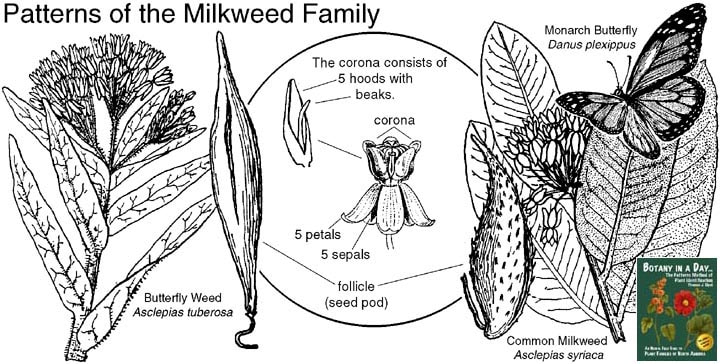
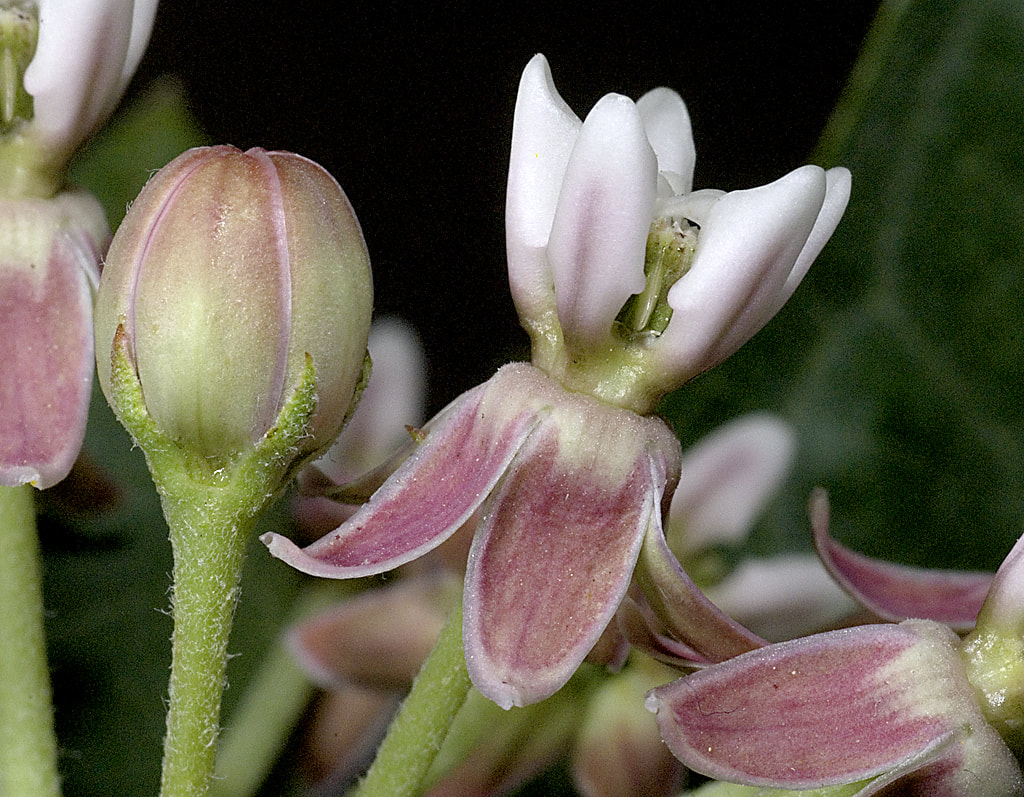
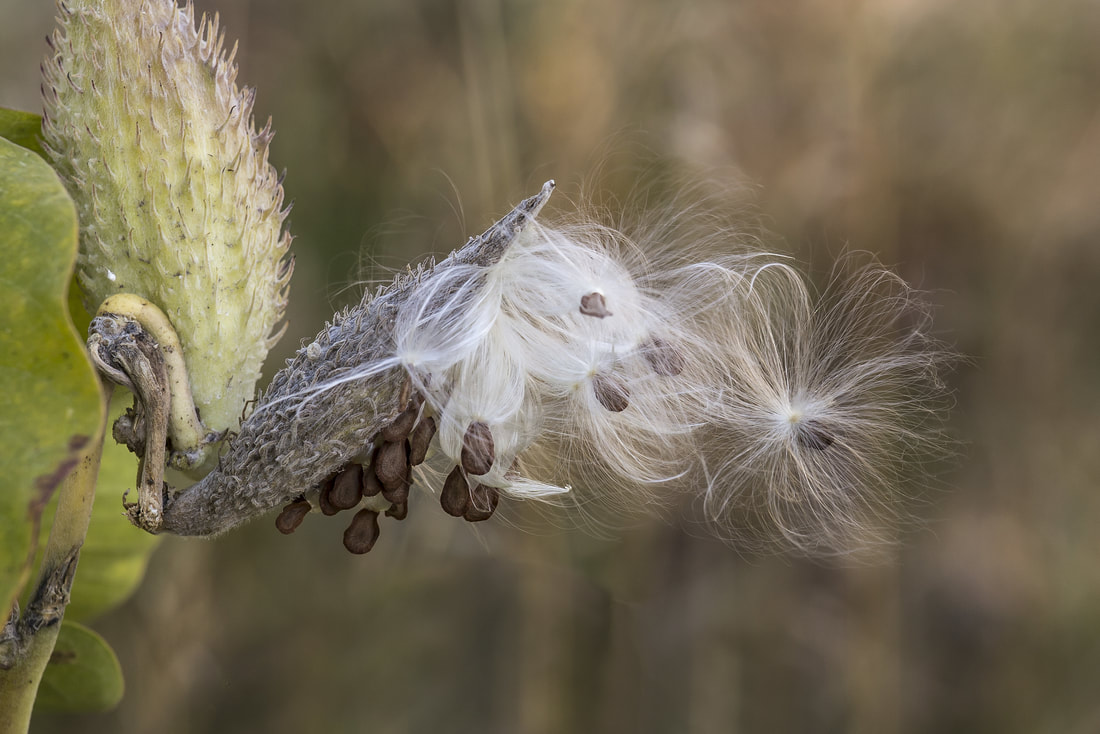
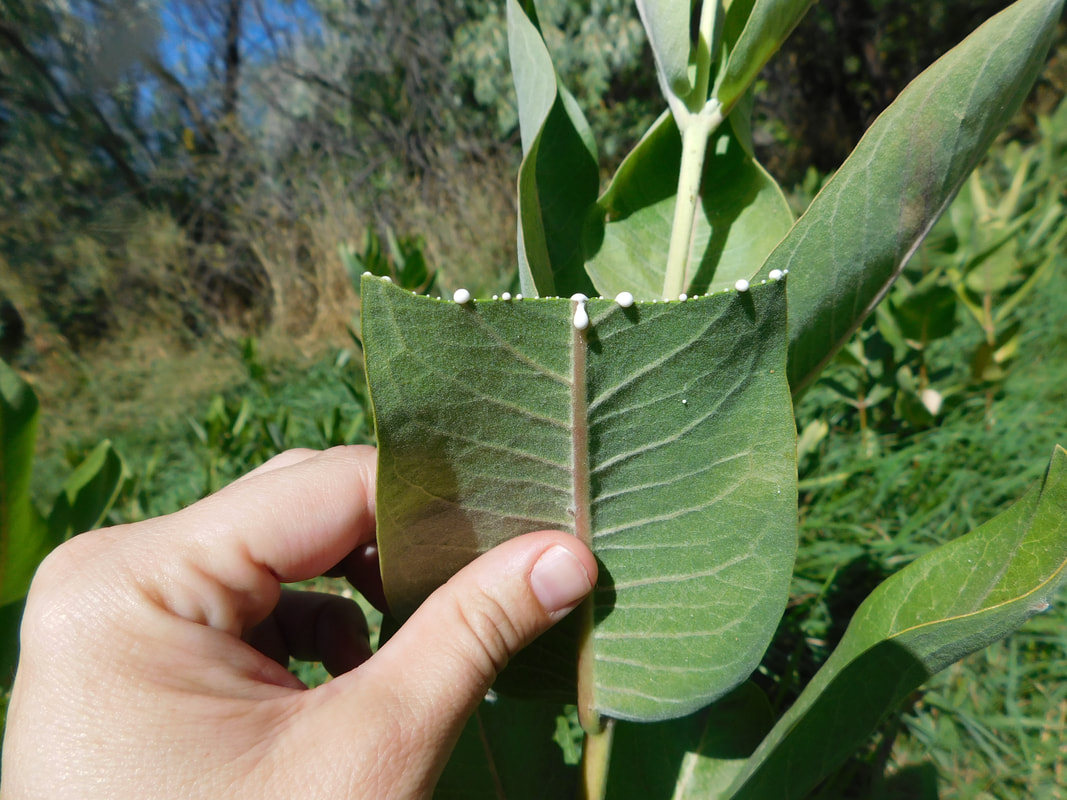
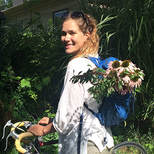
 RSS Feed
RSS Feed